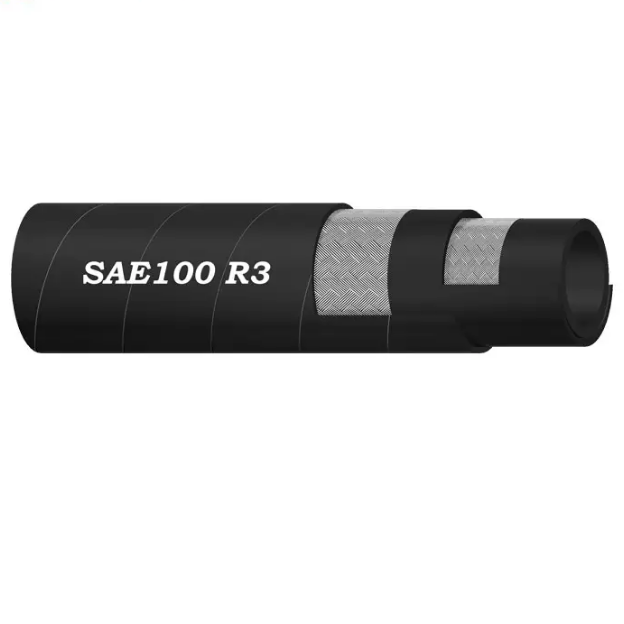335345435
Aug . 11, 2024 16:02 Back to list
Understanding Different Categories of Hoses Used in Hydraulic Systems for Various Applications
Types of Hoses in Hydraulic Systems
Hydraulic systems are essential for the efficient operation of various machinery across multiple industries, from construction equipment to manufacturing processes. One of the critical components of these systems is hydraulic hoses, which transport hydraulic fluid under pressure to drive different actuators and components. The selection of the right type of hose is crucial for ensuring safety, efficiency, and system longevity. This article explores the various types of hoses used in hydraulic systems and their unique characteristics.
1. Rubber Hydraulic Hoses
Rubber hydraulic hoses are the most common type found in hydraulic systems. They are made from durable rubber compounds that offer excellent flexibility and resistance to wear. These hoses typically consist of three layers an inner tube that carries the hydraulic fluid, a reinforcement layer made of textile or steel wire, and an outer cover that protects against environmental factors. Rubber hoses are versatile and can handle a wide range of temperatures and pressures, making them suitable for many applications. However, they may not be ideal for extreme temperatures or harsh chemical environments.
2. Thermoplastic Hydraulic Hoses
Thermoplastic hoses are gaining popularity due to their lightweight nature and superior resistance to abrasion and chemicals compared to rubber hoses. Made from high-quality thermoplastic materials, these hoses can handle high pressures and are often used in applications where flexibility and lightweight design are critical. An additional advantage is their resistance to many fluids, making them suitable for various hydraulic applications. Thermoplastic hoses can also feature a coiled design, which adds further flexibility in tight spaces.
types of hoses in hydraulic system

Steel wire braided hoses are engineered to withstand high-pressure conditions. They feature a strong layer of steel wire braiding that reinforces the rubber or thermoplastic tube. This construction allows them to handle extreme pressures, making them ideal for heavy-duty applications such as industrial machinery or construction equipment. While offering enhanced strength and durability, these hoses are less flexible than their rubber and thermoplastic counterparts, which can make installation a bit more challenging.
4. Spiral Wire Wrapped Hoses
Spiral wire-wrapped hoses are built for applications that require excellent resistance to high pressures and external forces. Unlike braided hoses, these feature a spiral arrangement of wire reinforcement, which provides added strength and flexibility. This design makes them suitable for heavy-load tasks, including mining and earthmoving equipment. The flexibility of spiral wire hoses also allows for easier routing, which can be beneficial in complex hydraulic systems.
5. Composite Hoses
Composite hoses are constructed using a combination of materials, often featuring layers of plastic or rubber along with metallic reinforcements. These hoses are particularly advantageous in situations where a high degree of chemical resistance and flexibility is required. Composite hoses are lightweight and easy to handle, making them suitable for various hydraulic applications, especially in the chemical industry.
Conclusion
Choosing the right type of hydraulic hose is vital for the overall performance and safety of hydraulic systems. Each type of hose – whether rubber, thermoplastic, steel wire braided, spiral wire, or composite – offers its own set of advantages and is suited for specific applications. Understanding the characteristics and applications of these hoses helps engineers and maintenance professionals make informed decisions that enhance the efficiency and reliability of hydraulic systems. As technology advances, new materials and designs continue to emerge, contributing to the ongoing evolution of hydraulic hose technology.
-
SAE 100 R17 Black Smooth Cover Hydraulic Hose
NewsMar.07,2025
-
SAE 100 R17 Black Smooth Cover Hydraulic Hose
NewsMar.07,2025
-
SAE 100 R17 Black Smooth Cover Hydraulic Hose
NewsMar.07,2025
-
SAE 100 R17 Black Smooth Cover Hydraulic Hose
NewsMar.07,2025
-
SAE 100 R17 Black Smooth Cover Hydraulic Hose
NewsMar.07,2025
-
steel wire braided hydraulic hose
NewsMar.07,2025



